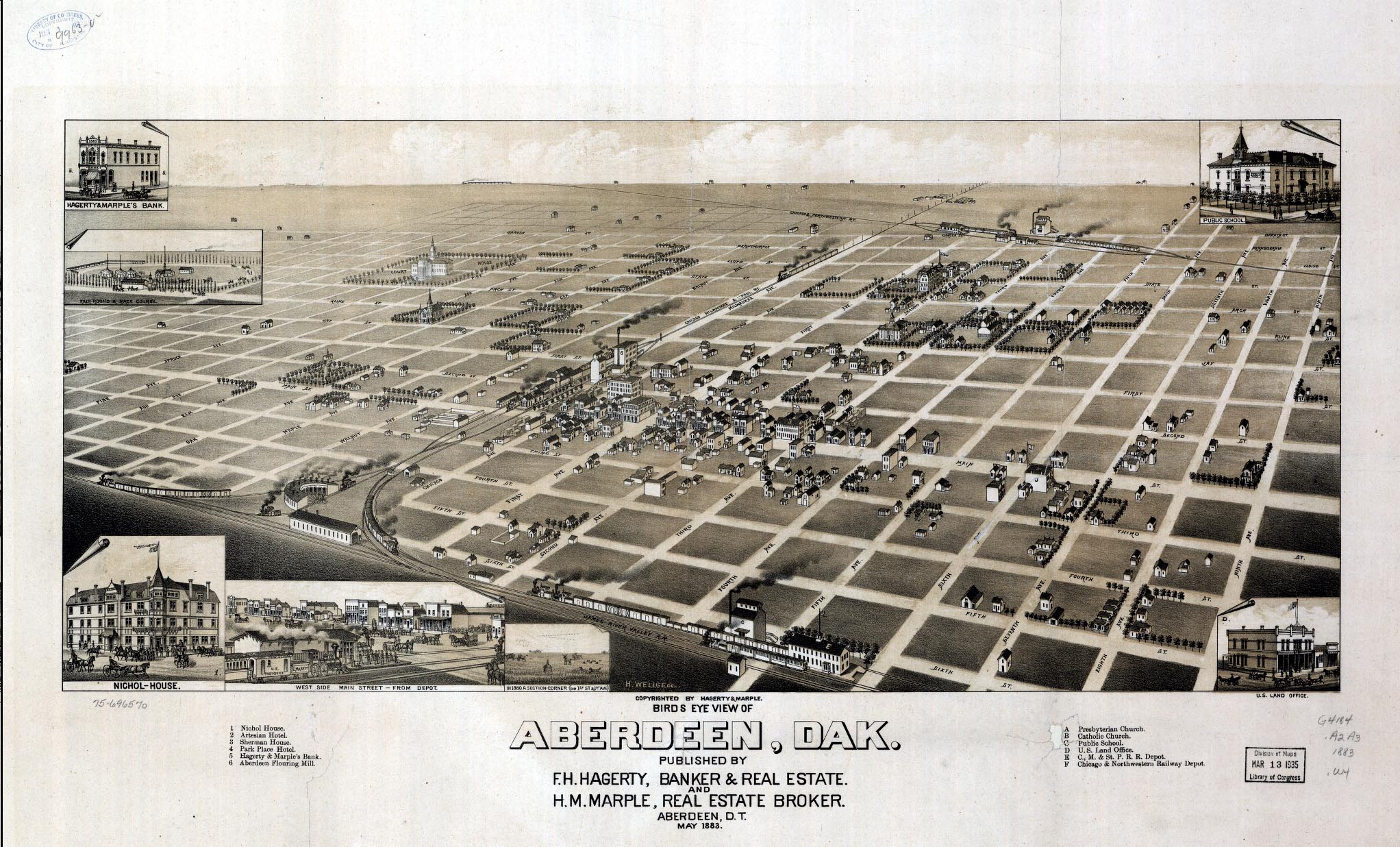|
KMOM
KMOM (105.5 FM, "105.5 Maverick FM") is a radio station broadcasting a country music format. Licensed to Roscoe, South Dakota, United States, the station serves the Aberdeen area. The station is currently owned by Dakota Broadcasting. It airs a mix of new country, classic country and Texas/ Red Dirt country. The call sign was previously used for an AM radio station at 1070 AM licensed to Monticello, Minnesota, United States, which operated during the 1980s and early 1990s. On May 23, 2020, KMOM rebranded as "105.5 Maverick FM". Radioinsight - May 29, 2020 Previous logo References External links [...More Info...] [...Related Items...] OR: [Wikipedia] [Google] [Baidu] |
KMOM Logo
KMOM (105.5 FM broadcasting, FM, "105.5 Maverick FM") is a radio station broadcasting a country music format. Licensed to Roscoe, South Dakota, United States, the station serves the Aberdeen, South Dakota, Aberdeen area. The station is currently owned by Dakota Broadcasting. It airs a mix of new country, classic country and Texas country music, Texas/Red Dirt (music), Red Dirt country. The call sign was previously used for an AM radio station at 1070 AM Broadcasting, AM licensed to Monticello, Minnesota, United States, which operated during the 1980s and early 1990s. On May 23, 2020, KMOM rebranded as "105.5 Maverick FM". Radioinsight - May 29, 2020 Previous logo References Exter ...
|
Aberdeen, South Dakota
Aberdeen ( Lakota: ''Ablíla'') is a city in and the county seat of Brown County, South Dakota, United States, located approximately northeast of Pierre. The city population was 28,495 at the 2020 census, making it the third most populous city in the state after Sioux Falls and Rapid City. Aberdeen is the principal city of the Aberdeen Micropolitan Statistical Area, which includes all of Brown and Edmunds counties and has a population of 42,287 in 2020. Aberdeen is considered a college town, being the home of both Northern State University and Presentation College. History Settlement Before Aberdeen or Brown County was inhabited by European settlers, it was inhabited by the Sioux Indians from approximately 1700 to 1879. Europeans entered the region for business, founding fur trading posts during the 1820s; these trading posts operated until the mid-1830s. The first "settlers" of this region were the Arikara Indians, but they would later be joined by others. The first gr ... [...More Info...] [...Related Items...] OR: [Wikipedia] [Google] [Baidu] |
KABD
KABD (107.7 FM) is a radio station broadcasting an adult hits format. Licensed to Ipswich, South Dakota, United States, the station serves the Aberdeen Aberdeen (; sco, Aiberdeen ; gd, Obar Dheathain ; la, Aberdonia) is a city in North East Scotland, and is the third most populous city in the country. Aberdeen is one of Scotland's 32 local government council areas (as Aberdeen City), and ... area. The station is currently owned by Dakota Broadcasting. On May 23, 2020, KABD rebranded as "107.7 The Shark". Radioinsight - May 29, 2020 Previous logo References External links [...More Info...] [...Related Items...] OR: [Wikipedia] [Google] [Baidu] |
Radio Stations In South Dakota ...
The following is a list of FCC-licensed radio stations in the U.S. state of South Dakota, which can be sorted by their call signs, frequencies, cities of license, licensees, and programming formats. List of radio stations Defunct * KABR References {{Navboxes , title = South Dakota radio station regional navigation boxes , list = {{Aberdeen Radio {{Brookings Radio {{Huron-Mitchell Radio {{Pierre Radio {{Rapid City Radio {{Sioux City Radio {{Sioux Falls Radio {{Watertown SD Radio {{Yankton-Vermillion Radio South Dakota South Dakota (; Sioux language, Sioux: , ) is a U.S. state in the West North Central states, North Central region of the United States. It is also part of the Great Plains. South Dakota is named after the Lakota people, Lakota and Dakota peo ... [...More Info...] [...Related Items...] OR: [Wikipedia] [Google] [Baidu] |
Roscoe, South Dakota
Roscoe is a city in central Edmunds County, South Dakota, United States. The population was 269 at the 2020 census. Roscoe was laid out in 1877, and named in honor of Roscoe Conkling, a United States Senator from New York. Geography Roscoe is located at (45.450306, -99.336783). According to the United States Census Bureau, the city has a total area of , all land. Roscoe has been assigned the ZIP code 57471 and the FIPS place code 55820. Climate Demographics 2010 census As of the census of 2010, there were 329 people, 153 households, and 83 families residing in the city. The population density was . There were 177 housing units at an average density of . The racial makeup of the city was 97.0% White, 0.9% African American, 0.3% Native American, and 1.8% from two or more races. Hispanic or Latino of any race were 4.6% of the population. There were 153 households, of which 26.1% had children under the age of 18 living with them, 45.8% were married couples living togethe ... [...More Info...] [...Related Items...] OR: [Wikipedia] [Google] [Baidu] |
Country Music
Country (also called country and western) is a genre of popular music that originated in the Southern and Southwestern United States in the early 1920s. It primarily derives from blues, church music such as Southern gospel and spirituals, old-time, and American folk music forms including Appalachian, Cajun, Creole, and the cowboy Western music styles of Hawaiian, New Mexico, Red Dirt, Tejano, and Texas country. Country music often consists of ballads and honky-tonk dance tunes with generally simple form, folk lyrics, and harmonies often accompanied by string instruments such as electric and acoustic guitars, steel guitars (such as pedal steels and dobros), banjos, and fiddles as well as harmonicas. Blues modes have been used extensively throughout its recorded history. The term ''country music'' gained popularity in the 1940s in preference to ''hillbilly music'', with "country music" being used today to describe many styles and subgenres. It came to encompas ... [...More Info...] [...Related Items...] OR: [Wikipedia] [Google] [Baidu] |
Watt
The watt (symbol: W) is the unit of power or radiant flux in the International System of Units (SI), equal to 1 joule per second or 1 kg⋅m2⋅s−3. It is used to quantify the rate of energy transfer. The watt is named after James Watt (1736–1819), an 18th-century Scottish inventor, mechanical engineer, and chemist who improved the Newcomen engine with his own steam engine in 1776. Watt's invention was fundamental for the Industrial Revolution. Overview When an object's velocity is held constant at one metre per second against a constant opposing force of one newton, the rate at which work is done is one watt. : \mathrm In terms of electromagnetism, one watt is the rate at which electrical work is performed when a current of one ampere (A) flows across an electrical potential difference of one volt (V), meaning the watt is equivalent to the volt-ampere (the latter unit, however, is used for a different quantity from the real power of an electrical circuit ... [...More Info...] [...Related Items...] OR: [Wikipedia] [Google] [Baidu] |
FM Broadcasting
FM broadcasting is a method of radio broadcasting using frequency modulation (FM). Invented in 1933 by American engineer Edwin Armstrong, wide-band FM is used worldwide to provide high fidelity sound over broadcast radio. FM broadcasting is capable of higher fidelity—that is, more accurate reproduction of the original program sound—than other broadcasting technologies, such as AM broadcasting. It is also less susceptible to common forms of interference, reducing static and popping sounds often heard on AM. Therefore, FM is used for most broadcasts of music or general audio (in the audio spectrum). FM radio stations use the very high frequency range of radio frequencies. Broadcast bands Throughout the world, the FM broadcast band falls within the VHF part of the radio spectrum. Usually 87.5 to 108.0 MHz is used, or some portion thereof, with few exceptions: * In the former Soviet republics, and some former Eastern Bloc countries, the older 65.8–74 M ... [...More Info...] [...Related Items...] OR: [Wikipedia] [Google] [Baidu] |
Radio Station
Radio broadcasting is transmission of audio (sound), sometimes with related metadata, by radio waves to radio receivers belonging to a public audience. In terrestrial radio broadcasting the radio waves are broadcast by a land-based radio station, while in satellite radio the radio waves are broadcast by a satellite in Earth orbit. To receive the content the listener must have a broadcast radio receiver (''radio''). Stations are often affiliated with a radio network which provides content in a common radio format, either in broadcast syndication or simulcast or both. Radio stations broadcast with several different types of modulation: AM radio stations transmit in AM ( amplitude modulation), FM radio stations transmit in FM (frequency modulation), which are older analog audio standards, while newer digital radio stations transmit in several digital audio standards: DAB (digital audio broadcasting), HD radio, DRM ( Digital Radio Mondiale). Television bro ... [...More Info...] [...Related Items...] OR: [Wikipedia] [Google] [Baidu] |
Country Music
Country (also called country and western) is a genre of popular music that originated in the Southern and Southwestern United States in the early 1920s. It primarily derives from blues, church music such as Southern gospel and spirituals, old-time, and American folk music forms including Appalachian, Cajun, Creole, and the cowboy Western music styles of Hawaiian, New Mexico, Red Dirt, Tejano, and Texas country. Country music often consists of ballads and honky-tonk dance tunes with generally simple form, folk lyrics, and harmonies often accompanied by string instruments such as electric and acoustic guitars, steel guitars (such as pedal steels and dobros), banjos, and fiddles as well as harmonicas. Blues modes have been used extensively throughout its recorded history. The term ''country music'' gained popularity in the 1940s in preference to ''hillbilly music'', with "country music" being used today to describe many styles and subgenres. It came to encompas ... [...More Info...] [...Related Items...] OR: [Wikipedia] [Google] [Baidu] |
Federal Communications Commission
The Federal Communications Commission (FCC) is an independent agency of the United States federal government that regulates communications by radio, television, wire, satellite, and cable across the United States. The FCC maintains jurisdiction over the areas of broadband access, fair competition, radio frequency use, media responsibility, public safety, and homeland security. The FCC was formed by the Communications Act of 1934 to replace the radio regulation functions of the Federal Radio Commission. The FCC took over wire communication regulation from the Interstate Commerce Commission. The FCC's mandated jurisdiction covers the 50 states, the District of Columbia, and the territories of the United States. The FCC also provides varied degrees of cooperation, oversight, and leadership for similar communications bodies in other countries of North America. The FCC is funded entirely by regulatory fees. It has an estimated fiscal-2022 budget of US $388 million. It h ... [...More Info...] [...Related Items...] OR: [Wikipedia] [Google] [Baidu] |
Texas Country Music
Texas country music (more popularly known just as Texas country or Texas music) is a rapidly growing subgenre of country music from Texas. Texas country is a unique style of Western music and is often associated with other distinct neighboring styles, including Red Dirt from Oklahoma, the New Mexico music of New Mexico, and Tejano in Texas, all of which have influenced one another over the years, and are popular throughout Texas, the Midwest, the Southwest, and other parts of the Western United States. Texas Country is known for fusing neotraditional country with the outspoken, care-free views of outlaw country. Texas Country blends these sub-genres with a " common working man" theme and witty undertones, these often combine with a stripped down music sound. Neither the location of birth nor the location of upbringing seems to calculate in the definition of a Texas Country artist, as long as the origin is not in the corporate Nashville scene as the genre tends to be anti-Nas ... [...More Info...] [...Related Items...] OR: [Wikipedia] [Google] [Baidu] |





